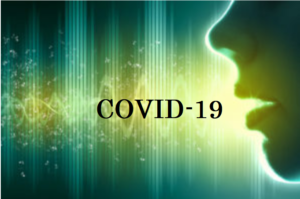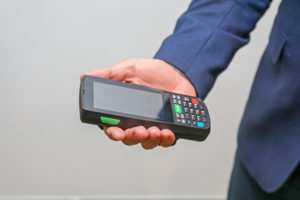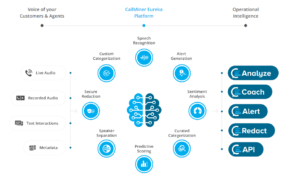
Speech Analytics Makes Unexpected Discovery

(sergey_nivens/Shutterstock)
The folks at CallMiner had theories about what their speech analytics software would turn up when they launched an informal coronavirus customer research program back in March. The COVID-19 pandemic has upended life as we know it, and large corporations with big contact center operations have been forced to quickly adapt to the new work-from-home model. But when the AI work was done, there was one discovery that stood out above the others.
One of the CallMiner customers that participated in Coronavirus Customer Thinktank is in the business of managing the medical waste streams from hospitals and other medical establishments. A pandemic is probably a big deal for medical waste company, figured Steve Chirokas, CallMiner’s director of product and channel marketing.
The medical waste outfit used Eureka the Boston company’s flagship platform for analyzing customer interactions across telephones, email, chat, and other channel, to analyze what their customers were saying. The company anticipated that they were going to get a lot of questions from their clients about issues relating to the disposal of medical waste, Chirokas said.
“That wasn’t what happened,” he told Datanami.
What the AI software bubbled up was the fact that the company was being inundated with calls from another part of their business that had to do with paper shredding. Why would they be getting calls for paper shredding, Chirokas wondered.
“The calls were coming from people who were concerned that they had to use their finger to sign the little handheld device to confirm that stuff was picked up,” he said. “Was that device being cleaned? How safe was that device? Am I going to get coronavirus from that device?
“It was something that was completely unexpected and something they worked to resolve,” Chirokas added. “It was really kind of interesting.”
Being able to extract that particular customer concern was no easy task. In fact, Chirokas thinks it would not have been impossible to do without AI.
“They would not have found that without [AI], I don’t believe, because it was totally unexpected,” he said. “When you have all these calls coming into the contact center, the challenge for people who don’t have that kind of software is they can’t correlate these kinds of things. They don’t have the overall awareness. One or two agents may be picking this up, but there’s no centralized way to bubble up this information.”
CallMiner has been bubbling up intelligence from contact centers since it was founded back in 2002. In the beginning, it took quite a bit of skill on the part of a business analyst to be able to extract meaning from the transcripts of phone calls between companies and their customers. A lot of potentially valuable nuance was left on the contact center floor.
But in recent years, we’ve seen the creation of powerful neural network techniques that can detect small patterns hidden in large amounts of unstructured data (like text). CallMiner has used this supercharged machine learning to bolster the natural language processing (NLP) capabilities of Eureka, and today it’s able to extract much more intelligence from a broader body of interactions, ranging from phone calls to text and email chats. These technical benefits have accumulated in improved customer service for the likes of Lyft, Sirius XM, and Wayfair, in addition to many large banks that won’t allow CallMiner to use their names.
“What the team have been able to do by incorporating AI and machine learning is massively increase the speed at which we can produce relevant categories – or business rules, understanding what’s happening in the conversation,” said CallMiner COO Adam Walton. “That process is now so much more comprehensive and faster and more accurate because we’re leveraging AI and machine learning.”
The Coronavirus Customer Thinktank yielded a few other interesting insights into the state of the contact center business, which has been upended as a result of COVID-19. While some companies had already moved to a work-from-home (WFH) model prior to the pandemic, an estimated 90% of the workforce still worked in a traditional contact center environments, according to CallMiner. The rapid shift to a WFH was stressful, and CallMiner’s software was relied upon to help pinpoint the exact needs.
For example, Eureka detected that the length of calls in healthcare collections environments suddenly spiked. “Conversation length increased dramatically,” Walton said. “They wondered whether that was due to just more complexity, and customers having more issues and therefore more calls are more complex.”
But when they drilled down into the data to figure out what was happening, Eureka showed that the agents themselves were quite eager to talk with customers about the COVID-19 pandemic, which resulted in the extra-long calls, Walton said.
“It was almost like [the contact center workers] needed the conversation, rather than the customer needing it,” he said. “Whereas their challenge [traditionally] is getting the agents to show enough empathy, in this case, the agents were over-empathizing, when in some cases those customers were not actually interested in doing that. They just wanted a transaction completed quickly. So they were able to identify that and re-coach their agents to be careful not to do that. Then they saw a reduction in call time.”
According to CallMiner, call volumes in contact centers have dropped by about 25% during COVID-19, which reflects the overall slowdown in the economy as a result of the coronavirus pandemic. Text interactions are staying pretty steady, however.
Another issue that has come up is noise pollution in the WFH environment. Whether it’s children or dogs barking in the background, there are basic audio challenges to overcome when workers are taken out of the professional environment and set up work from the dining room table. Some workers also lack good Internet connections, which complicates their ability to navigate the applications that they use, or potentially call quality if using a voice over IP line.
Eureka software identified another common category in the WFH era – the not-happy-to-be-working-from-home worker. The NLP software can pick up a disgruntled contact center worker just as readily as it can detect an unsatisfied customer. For a company that’s trying to roll with COVID-19’s punches, having the capability to automatically detect unhappy workers can be quite useful.
“So many things are changing so quickly, with what’s happening to the customers and the way that businesses are operating, etc,” Walton said. “The availability of a near real-time source of intelligence on which processes are working, which ones are broken, how agents are coping with working from home, and which customers are vulnerable or having difficult as a result of the pandemic, is invaluable.”
Related Items:
Can Thought Vectors Deliver Human-Level Reasoning?
Voice: The New Interface for Analytics

































